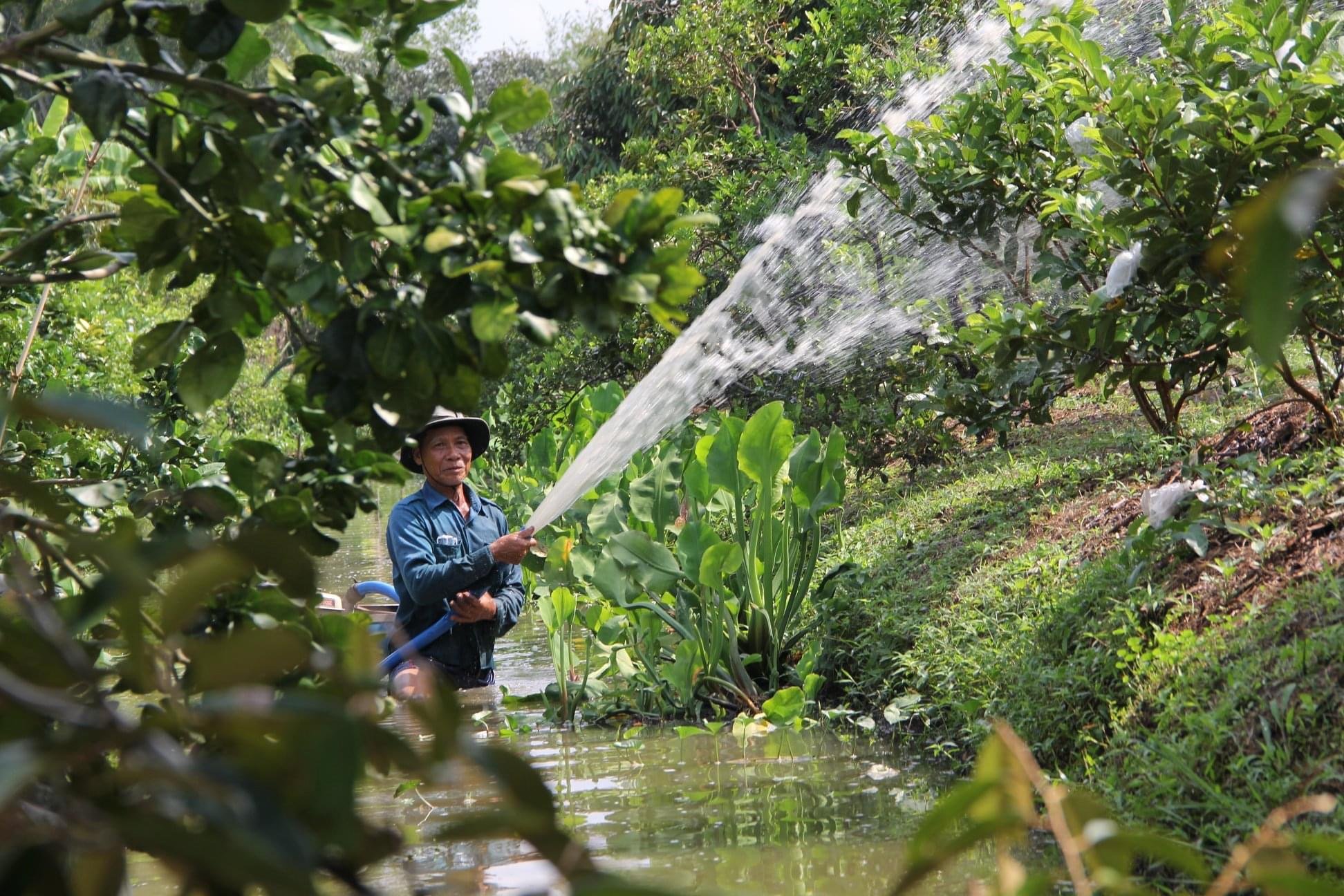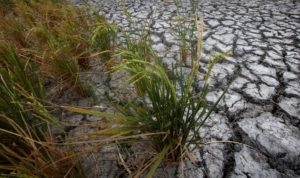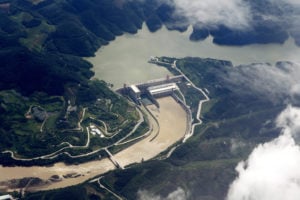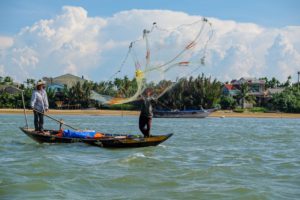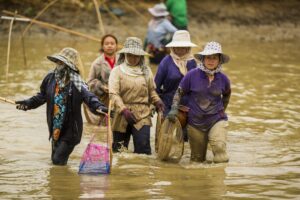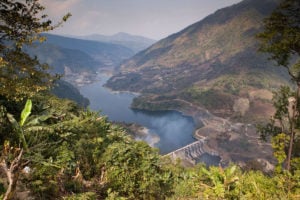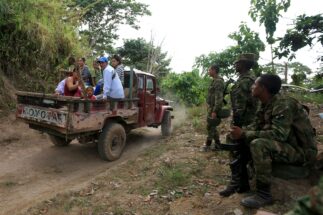For generations, Vietnamese communities have used the ample water resources and fertile soil of the Mekong Delta to feed the nation. Fuelled by the Mekong’s constant supply of rich sediment, the fisheries and paddy fields of Vietnam’s southernmost region have long been the bedrock of Vietnam’s economy. But a combination of climate change and upstream hydropower are warping the delta’s natural resources. Research by The Third Pole suggests that current resilience strategies are falling short and may exacerbate problems in the long term.
The Third Pole’s data analysis highlights that current solutions are focusing on short-term fixes. These maintain the delta’s high agricultural productivity even though the water needed in the long term is not there, and is unlikely to come back. Not addressing the root causes of water and sediment shortages may irreversibly damage the delta, known as Vietnam’s rice bowl, as the country uses up resources that cannot be replenished.
The Mekong’s waning fertility
The Third Pole’s analysis used data from the Mekong Dam Monitor, a public online monitoring platform that measures climate issues in the basin using satellite imagery, GIS analysis and remote sensing. The Mekong Dam Monitor also models the natural flow of the river – simulating what conditions would be without the impact of dams.
Comparing actual flow with simulated flow reveals that the river has lost a quarter of its expected water flow in the rainy season. Exacerbating the problem, rainfall has decreased by 10%-45% in the dry season, while the average temperature has increased.
Such a huge drop in water requires that farmers switch to less-thirsty crops. But the opposite is happening. As fertile areas shrink, production of water-intensive crops such as rice is increasing, worsening water shortages.
“The agricultural productivity of Vietnam’s Mekong Delta faces a triple threat of impacts from upstream dams, rising seas and a legacy of poor local planning,” said Brian Eyler, Southeast Asia director of the Stimson Center, a Washington DC-based think tank that jointly developed the Mekong Dam Monitor.
“These threats have robbed the delta of reliable flows of freshwater and the distribution of nutritious sediment across the delta’s floodplains during the wet season. It’s unlikely that freshwater sediment availability will ever return to normal levels in the delta,” Eyler told The Third Pole.
Water flow falls during the rainy season
According to our analysis of Mekong Dam Monitor data, since 2008 the average volume of water in the Mekong during the rainy season (between June and November) has been 2.4 billion cubic metres less per month than the simulated natural volume. This is the equivalent of nearly a million Olympic swimming pools. Along with water, sediment has been lost: around three-quarters of the material crucial for agriculture. Sediment contains the minerals and nutrients that crops need to grow.
Part of the reason the problem has been ignored is that it is difficult to measure and very few institutions attempt to. The water flow of a river is estimated by measuring the volume of water flowing through a given water gauge each second, in this case at Chiang Saen in the north of Thailand. This decreased flow in the rainy season is largely to do with reduced rainfall and partly attributed to hydropower dams on China’s section of the Mekong, which are holding back both water and sediment. But, in the dry season, Chinese dams release water to keep pace with high demand for energy, thus sending water downstream.
In recent research which is awaiting publication, Eyler and his colleagues have found that the flow of water reaching the Mekong Delta is impacted by Chinese dams on top of climate change. In their study, they looked at Stung Treng gauge in Cambodia, 400km north of the delta.
“During low flow years, upstream dams in China have increasingly reduced wet season flow between 9-11%,” Eyler said. “Dam restrictions in China can reduce the natural flood pulse of the Mekong at Stung Treng by up to 27% for certain months during years with low flow.”
Đào Minh Tuấn, a farmer who heads a cooperative in Cần Thơ in Vietnam’s Mekong Delta, has long observed what scientists are now trying to measure.
“Before 2010, there was more water, and it had much more silt. Now, there is less water and less silt,” he said.
Climate change means less fresh water in the Mekong Delta
By the end of the dry season, farmers struggle to find enough fresh water and have to battle the intrusion of saltwater. “The main challenges for the farmers come from salinity and sea level rise, which are exacerbated by climate change,” said Nguyễn Văn Hùng, a researcher at the International Rice Research Institute. In addition, “More erratic weather makes it harder for them to anticipate the rain.”
The early impacts of climate change have led to scarcer rainfall in the Mekong Delta region. In the coastal province of Cà Mau, in southern Vietnam, data from the weather station shows increasingly severe dry seasons. Every year since 2015, rainfall has been below the 18-year average, with the worst drought recorded in 2018, when recorded rainfall was nearly half the average.
According to the same weather station, the average temperature at Cà Mau was 0.3 degrees Celsius higher in 2015-20 than the 18-year average. A peer-reviewed study published in 2017 found this could reduce rice production by 3%.
The prognosis is alarming because more than half of the 20 million people in the delta rely on agriculture and aquaculture for their livelihoods.
Too much rice in the basket
Across Vietnam, resilience plans have focused on exploiting scarce water resources instead of shifting agriculture away from water-intensive crops and practices. Irrigation has allowed farmers in the delta to grow rice three times a year instead of two like in the rest of the country.
“I produce about 7 to 8 tonnes of rice per hectare in the winter-spring season, 5 to 6 tonnes in the summer season, and 5 to 7 tonnes in the autumn-winter season, but this depends on the weather,” said Đào Minh Tuấn, the farmer in Cần Thơ.
The delta now accounts for more than half of Vietnam’s rice production. In 2019, Vietnam produced around 44 million tonnes of rice – enough to feed the entire population for three years. Vietnam has become the world’s second-largest rice exporter.
Rice is a thirsty crop. Around 2,500 litres of water are needed to produce one kilogram. In the wet season, the rains supply enough freshwater, but during the dry season farmers depend on the Mekong for irrigation, increasing their reliance on water pumps and canals.
Unsustainable hard engineering
The intensive construction of channels and dykes has been a mixed blessing for Vietnam, and may hasten the declining fertility of the delta region. Two hundred years ago, French and American land planners started to develop a network of channels to take advantage of the fertile delta. Vietnamese engineers continued this work, and between 2011 and 2016 the number of solid public irrigation canals grew by a factor of 15, with the number of public pump stations increasing by 40%.
The proliferation of dykes and canals for irrigation mitigates the impacts of water scarcity, at least in the short term, but also reduces the amount of sediment settling in the wet season. Dykes block the sediment and canals quicken the flow of water, preventing small particles from being deposited.
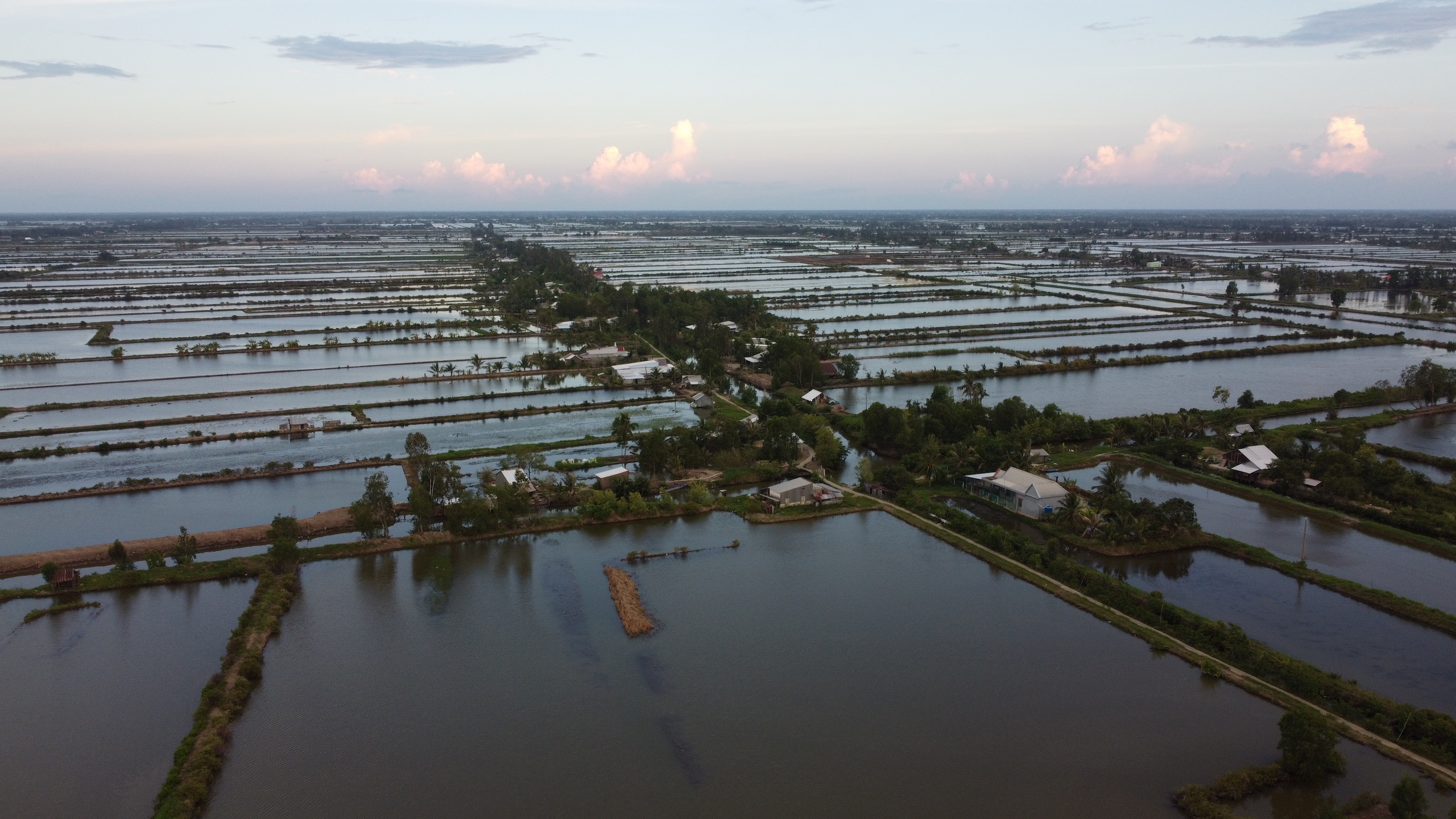
Though the irrigation system has allowed Vietnam to produce a rice surplus and also become the fourth-largest exporter of shrimp and fish, it may become increasingly hard to keep up the same level of production. In October 2021, a World Bank article expressed concern that degradation of ecosystems is leading to loss of livelihoods.
During the 2018-19 dry season, nearly 20,000 hectares of rice paddy – an area one-tenth the size of Ho Chi Minh city – were damaged by salt intrusion in coastal provinces such as Soc Trang, Kien Giang, Ben Tre, Tra Vinh and Ca Mau. Nearly 80,000 people in the delta did not have enough freshwater.
“If rice cultivation continues for the next 20 years with the [current] intensive farming methods, the land will become very poor,” said Nguyen Huu Thien, an independent consultant who used to work for Can Tho University and has been studying the ecology of the delta for the past 30 years.
Shrimp farming: A temporary solution to a worsening problem
One proposed solution is to make use of brackish water by farming shrimp, but that too may be a stopgap measure.
Shrimp farmers can earn 10 times more than rice farmers, prompting many to abandon rice cultivation to raise shrimp year-round. Yet shrimp farming requires high investment and a precise control of water quality, just as water scarcity is beginning to bite. In addition, poor water quality can kill shrimps.
“Shrimp farming is facing many difficulties such as polluted water, climate change and diseases,” said Nguyễn Hoài An, the head of a company in Cần Thơ that sells shrimp larvae. “Most shrimp farmers get water from the river and canals, but this water source is very polluted, so the risk of killing the shrimps with low-quality water and pathogens is very high.”
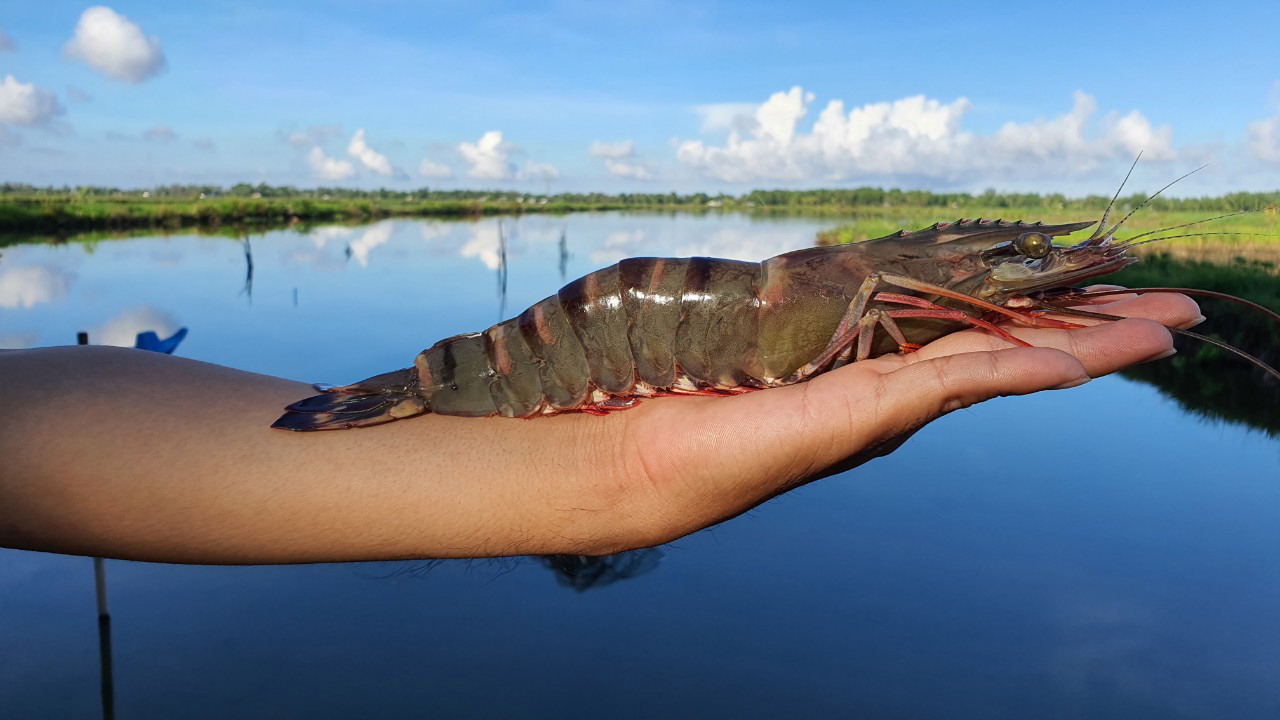
Saline intrusion, caused by reduced freshwater flows from dams as well as sea level rise, could worsen the situation. In 2019, this phenomenon ruined nearly 17,000 hectares of shrimp ponds in the coastal province of Ca Mau.
Vietnam is now looking to borrow funds to develop more infrastructure in the delta in a bid to maintain agricultural productivity, instead of finding ways to reduce water usage.
Can upstream save downstream?
In An Giang, the most upstream Vietnamese province of the Mekong Delta, a project is encouraging farmers to adopt a non-traditional rice cultivation method known as alternate wetting and drying (AWD). Phạm Huỳnh Thanh Vân, a researcher at the University of An Giang University working on the project, said: “We work with farmers to explain how much water the rice really needs.” Vân added: “If farmers from provinces upstream use less water, then other farmers downstream can have more water.”
Rather than keep paddy fields flooded all the time, the AWD method includes a non-flooded period. This reduces water use and methane emissions – a greenhouse gas far more potent than carbon dioxide.
“AWD can reduce water use by 20% and keep the same rice yield. People have already used this method in different areas of Vietnam and in other countries,” Vân said, adding that for the AWD method to work, all farmers in the area have to adopt it simultaneously.
In 2017, the Vietnamese government launched Resolution 120/NQ-CP, a policy to promote the sustainable development of the Mekong Delta. The measure includes the promotion of practices like AWD, as well as a reduction of rice production in favour of aquaculture and fruit trees.
“In the Mekong Delta, we grow rice three times a year, so we use a lot of water for rice. We believe that if we reduce rice production, we can save water. Rice can be replaced by fruit trees or vegetables for example,” Vân said. “We have water, but the question is how it should be stored in the wet season to be used in the dry season.”
Resolution 120 is a first step in the right direction, but experts said it will take years before farmers feel its effect.
“The captain has agreed to shift course of the massive ship,” says Thien, the consultant. “But it is too big to move. It will take 10 years to get this ship on course, and there are vested interest groups who will put up a tough fight along the way.”
The Mekong Delta has the largest migration rate in the country. As the impacts of unsustainable farming start to emerge, and yields decline in some parts of the region, about 150,000 people abandon the delta every year in search of better paying jobs in other provinces. Building long-term resilience in the delta will require a lot of creativity and cooperation, experts say.
Brian Eyler suggested considering higher-value cash crops which use less water, new vertical farming techniques that introduce temperate zone crops, and investing in industries to process and add value to agricultural products inside the delta. “People in Vietnam – from planners to academics to farmers – all need to explore and swiftly transition to approaches that address this new reality [of climate change],” he said.
Water flows and their impacts in the Mekong Delta are rarely researched and poorly understood. Reliable data on water flow, sediment volume (which local farmers are so dependent on) and saltwater intrusion is scarce. During this investigation, our analysis uncovered mistakes in the Mekong Dam Monitor model at the Vientiane water station in Laos. The monitor incorrectly showed an important loss of water flow both in the dry and wet season. Incorrect data can have far-reaching consequences if used to design resilience strategies. We reached out to the Mekong River Commission and Mekong Dam Monitor, which are working to fix the model.
This story was supported by the Mekong Data Journalism Fellowship jointly organised by Internews’ Earth Journalism Network and the East-West Center
